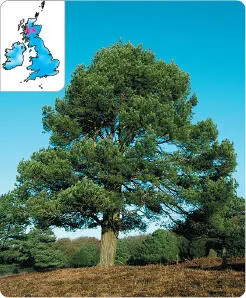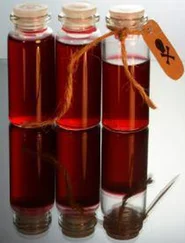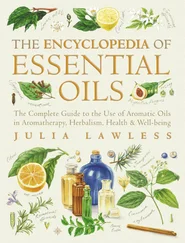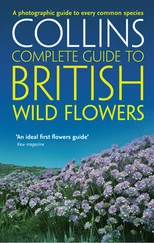The English name of each plant is followed by its scientific name, which comprises the genus name followed by the specific name. In a few instances, where this is pertinent, reference is made (either in the species heading or in the main body of the text) to a further subdivision: subspecies. Some cultivated trees and shrubs are known best, or sometimes exclusively, by their cultivar name, so where this helps with recognition I have included it; some hybrid trees and shrubs are now known only by their horticultural names.
The text has been written in as concise a manner as possible. Each description begins with a summary of the tree or shrub. To avoid potential ambiguities, the following subheadings break up the rest of each species description: BARK; BRANCHES (occasionally SHOOTS); LEAVES; REPRODUCTIVE PARTS; STATUS AND DISTRIBUTION; COMMENTS. Not all these headings are used for every species. Within the sections dealing with plant parts, colour, shape and size are described; these tend to be more constant, and hence are more useful for identification, than the overall size of the tree or shrub.
The maps provide invaluable information about the distribution and occurrence of species in the region, but obviously they are only relevant in the case of native species and widely naturalised ones. Magenta has been used to represent the range of native species while cyan denotes the occurrence of naturalised alien trees or shrubs; the intensity of the colour gives an indication of a species’ abundance in a given area. In compiling the maps, I have made reference to a number of sources, including An Atlas of the Wild Flowers of Britain and Northern Europe , various county floras, the New Atlas of the British and Irish Flora and my own notes. The maps represent the current ranges of trees and shrubs in the region in general terms. Please bear in mind that, given the size of the maps, small and isolated populations will not necessarily be featured. Furthermore, the ranges of many species (particularly invasive introduced species and declining native trees and shrubs) are likely to change as the years go by.

Map coloration helps distinguish between the native and introduced distributions of species such as the Scots Pine.
Great care has gone into the selection of photographs for this book and in many cases the images have been taken specifically for this project. Preference was given to photographs that serve both to illustrate key identification features of a species and to emphasise its beauty. In many instances, smaller inset photographs illustrate features useful for identification that are not shown clearly by the main image.
Achene– one-seeded dry fruit that does not split.
Acute– sharply pointed.
Alien– introduced by man from another part of the world.
Alternate– not opposite.
Anther– pollen-bearing tip of the stamen.
Auricle– one of a pair of lobes at the base of a leaf.
Axil– angle between the upper surface of a leaf, or its stalk, and the stem on which it is carried.
Berry– fleshy, soft-coated fruit containing several seeds.
Bract– modified, often scale-like leaf found at the base of flower stalks in some species.
Calcareous– containing calcium, the source typically being chalk or limestone.
Calyx– outer part of a flower, comprising the sepals.
Capsule– dry fruit that splits to liberate its seeds.
Catkin– hanging spike of tiny flowers.
Clasping– descriptive of leaf bases that have backward-pointing lobes which wrap around the stem.
Compound– (of leaves) divided into a number of leaflets.
Cordate– heart-shaped at the base.
Corolla– the collective term for the petals.
Cultivar– plant variety created by cultivation.
Deciduous– plant whose leaves fall in autumn.
Dentate– toothed.
Dioecious– having male and female flowers on separate plants.
Drupe– succulent or spongy fruit, usually with a hard-coated single seed.
Entire– (of leaves) with an untoothed margin.
Fruits– the seeds of a plant and their associated structures.
Glabrous– lacking hairs.
Globose– spherical or globular.
Hybrid– plant derived from the cross-fertilisation of two different species.
Inflorescence– the flowering structure in its entirety, including bracts.
Introduced– not native to the region.
Involucre– ring of bracts surrounding a flower or flowers.
Lanceolate– narrow and lance-shaped.
Leaflet– leaf-like segment or lobe of a leaf.
Lenticel– breathing pore on a fruit, shoot or trunk.
Linear– slender and parallel-sided.
Lobe– a division of a leaf.
Midrib– the central vein of a leaf.
Native– occurring naturally in the region and not known to have been introduced.
Oblong– (of leaves) with sides at least partly parallel.
Obtuse– (of leaves) blunt-tipped.
Opposite– (usually of leaves) arising in opposite pairs on the stem.
Oval– leaf shape.
Ovary– structure containing the ovules, or immature seeds.
Ovoid– egg-shaped.
Palmate– (of leaves) with finger-like lobes arising from the same point.
Pedicel– stalk of an individual flower.
Perianth– collective name for a flower’s petals and sepals.
Petals– inner segments of a flower, often colourful.
Petiole– leaf stalk.
Pinnate– (of leaves) with opposite pairs of leaflets and a terminal one.
Pod– elongated fruit, often almost cylindrical, seen in pea family members.
Pollen– tiny grains that contain male sex cells, produced by a flower’s anthers.
Pubescent– with soft, downy hairs.
Rachis– main stalk of a compound leaf or stem of an inflorescence or array of fruits.
Reflexed– bent back at an angle of more than 90 degrees.
Sepal– outer, usually less colourful, segments of a flower.
Stamen– male part of the flower, comprising anther and filament.
Stigma– receptive surface of the female part of a flower, to which pollen adheres.
Style– an element of the female part of the flower, sitting on the ovary and supporting the stigma.
Tepal– perianth segment when petals and sepals are not identifiably separable.
Tomentose– covered in cottony hairs.
Whorl– several leaves or branches arising from the same point on a stem.
In many ways, trees and shrubs are no different from other flowering plants – they just happen to be bigger. They all grow, produce leaves, flowers and fruits in order to reproduce, and compete with other forms of life in the struggle to survive. The following is a basic review of the biology of trees and shrubs, which will help any reader unfamiliar with the subject to gain a better understanding of these fascinating organisms.
Читать дальше













